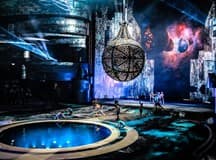Museums
Designing the Museum of the Future: Dubai's latest architectural marvel
Sun, August 1, 2021
Learn the high-tech design and engineering highlights of one of the world's most exciting buildings.
Learn the high-tech design and engineering highlights of one of the world's most exciting buildings.




